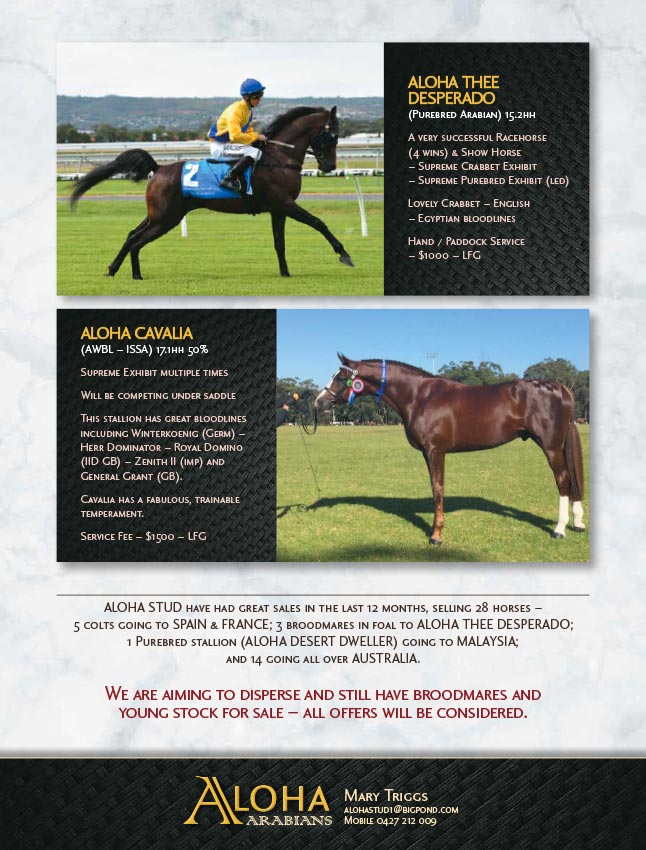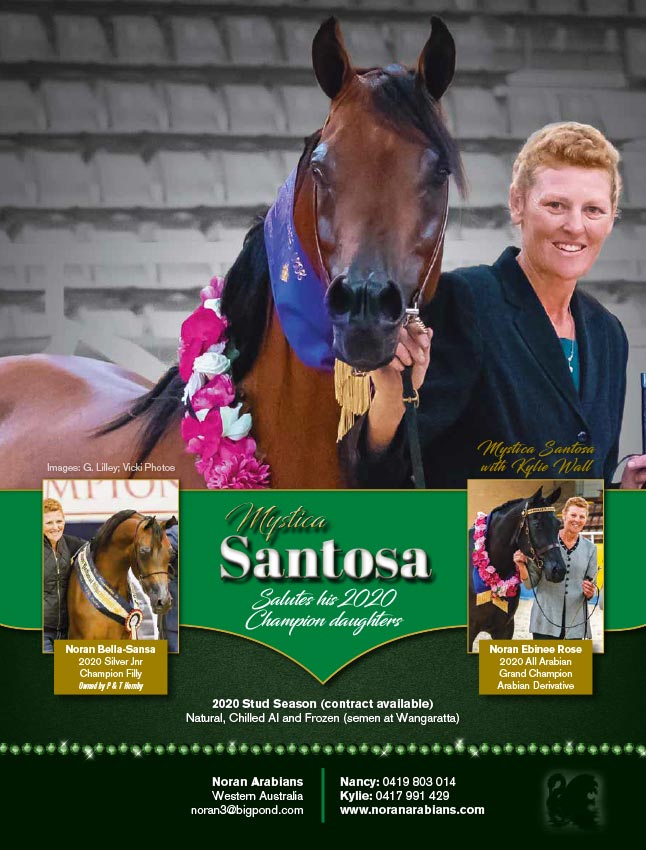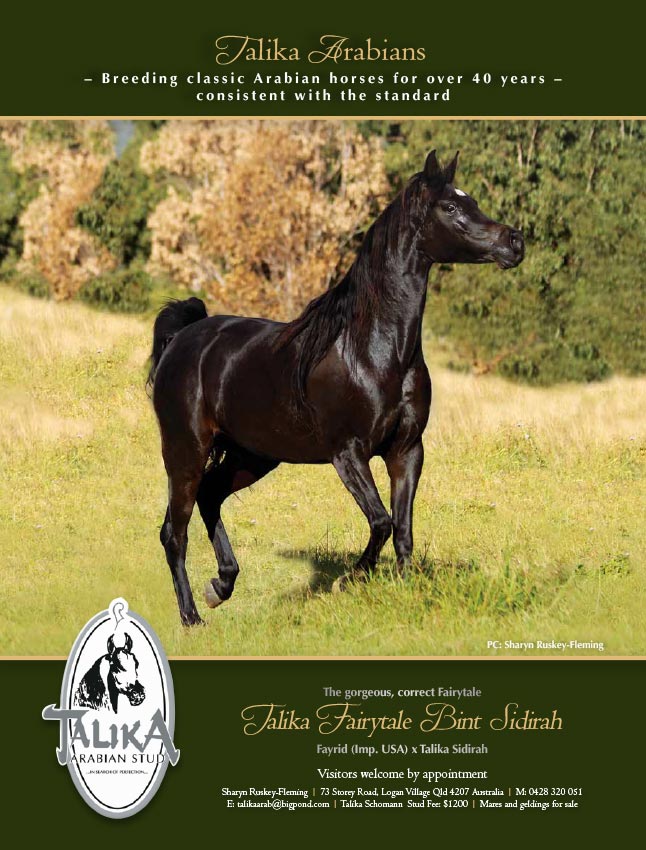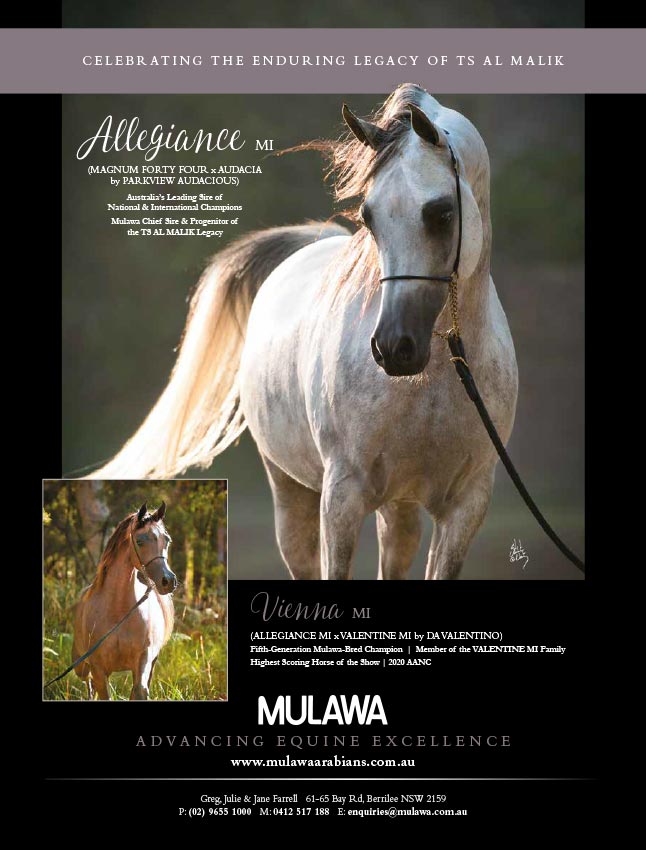
Youth in Focus
July 7, 2017
Legs – Building a Strong Foundation: Part 1
July 7, 2017Living History – Bahrain’s Desert Bred Arabians

This painting at the Bahrain Military Museum commemorates the 1816 Sitra battle won by the Al Khalifa warriors riding Arabians
An exciting part of the recent 2017 WAHO Conference was the Pearls of Bahrain Special Days, where we had the opportunity to see the noble Bahraini Desert Bred Arabian horses at the Royal Studs.
These Arabians are living history, as many of them are descendants of the warhorses ridden by the Al Khalifa Royal Family during their conquest of Bahrain over 230 years ago. The Al Khalifa family descends from the famous Anaza tribe and their ancestral home was Al-Haddar, south Najd in central Arabia, until they migrated to the east coast and gulf region.
The superb Al Khalifa desert bred war mares were famous for their fire and stamina during battle. Some strains such as the Obeyah, Mlolesh, Ma’anagieh, Kray, Kuheilah Afas and Shuwaimeh have been with the family since time immemorial and can still be found within the Royal Studs, while other strains have been introduced over the centuries as gifts from rulers and kings. Traditionally, only the finest horses were ever gifted.
Today, this unique collection of Desert Bred Arabians are carefully protected and bred by the Al Khalifa Royal Family for the purity of their strains. As Jenny Lees from Pearl Island Arabians in the UK, who has a long association with the Bahrain Royal Family and their horses, recounted, “HH Sheikh Isa bin Salman Bin Hamad explained the preservation program to me in this way, he said, ‘Throughout the centuries the warhorse was needed for our family’s very survival, now they need us for their survival. They took care of us and now it is our turn to take care of them.’”
The mares are greatly treasured and are bred for conformation, temperament, soundness, speed and comfort – which stemmed from the days when they were ridden bareback into battle. Each foal takes his or her dam’s strain name, regardless of the sire’s strain. For example, take the strain name Mlolesh, if the mare has a filly, she will be named Mlolesh and a given name is added, such as Mlolesh Samra. The same applies for colts – their strain name would be the masculine version, Mlolshaan, and a colt would be registered with his given name too – Mlolshaan Wesam.
The first stud we visited was His Majesty, King Hamad bin Isa Al Khalifa’s Royal Arabian Stud of Bahrain at Al Roudha on Sunday 12th February. As we stepped off the buses, we were directed to an attractive pavilion overlooking a desert backdrop surrounded by a semi-circle of small hills. We took our seats at large round tables where we each found a beautifully illustrated catalogue of the horses we were going to see – we were also given an equally beautiful catalogue at the HRH Prince Mohammed bin Salman Al Khalifa Stud the following day. It rained en-route to the stud but luckily stopped prior to the parade, although the wind turned blustery and occasionally whipped up the sand around the horses, making for an authentic desert experience.
Both mares and stallions are proven on the racetrack prior to being used for breeding at the stud. They are usually sent to the racing stables at Sakir at around three years of age, where they are broken-in, prepared and conditioned. They typically race as four-year-olds. Once they complete their racing careers, they return to the farm at Al Roudha. The racing season usually lasts from October to April and this season the stud had 50 Arabians in training with 38 racing. The horses are also used for pleasure riding.
The Arabians are kept in stables and paddocks. The mares are turned out in small herds in appropriate groupings – mares with foals, fillies, broodmares and retired broodmares. All paddocks have ad lib hay, water and shade. Each horse has a stable and is brought in for feeding or if the weather is inclement.
There were 23 foals born for the 2016/17 breeding season, with one still due as I wrote this report. Foals are weaned at six months and when they turn nine months old, the colts and fillies are separated and they are moved to five kilometre paddocks out in the desert.
The stallions have access to paddocks and are ridden daily. Apparently it’s not unusual to see a group of ten or more of them being exercised together.
The second stud visited was HRH Prince Mohammed bin Salman Al Khalifa Stud at Um Jeddar on Monday 13th February. Established by His Majesty the King’s late uncle, HRH Prince Mohammed bin Salman Al Khalifa, the stud’s foundation stock is from the same source as the Royal Stud. According to the catalogue supplied, “When Prince Mohammed was a young man he asked his father the Amir, Sheikh Salman bin Hamad Al Khalifa, if he could choose some mares, his delighted father was so pleased by this request he gave his youngest son the mares of his choice to establish his own stud and preservation breeding programme. The stud is now in the hands of Prince Mohammed’s sons.”
In recent years under the management of the new generation, the stud has grown significantly. Currently there are 547 horses resident with 18 breeding stallions plus nearly 250 more broken-in for riding. The stud breeds their horses throughout the year and 69 foals were born in 2016.
Interestingly, the traditional Bedouin way of keeping stallions is used at Um Jeddar. They are tethered via a front foot and by teaching them to stand tethered it means they can live side-by-side, rather than live in isolation like many stallions in the west. Jenny Lees told me she has never witnessed any horses crib biting, wind sucking or weaving. Of course the stallions also have a stable of their own with an open outlook where they can see and touch each other. Horses at the stud are used for pleasure riding and their stallions are also ridden in groups. Great testimony to their excellent temperaments!
At both studs the Arabian horses were shown to us in their family strain groups. This was extraordinarily interesting as in the larger groups you could easily see a family’s traits. Two traits that shone through time and time again was their superb tail carriage and great lift at the trot. Their harmonious proportions, natural free and proud carriage, calm and kind temperaments, dense bone, rock hard and well-shaped feet impressed us. They had strength and beauty and were true drinkers of the wind. In fact, you could imagine galloping into battle riding one of them!
We were both privileged and delighted to see Bahrain’s noble Desert Bred Arabian horses and they certainly left their hoof prints across our hearts!
































